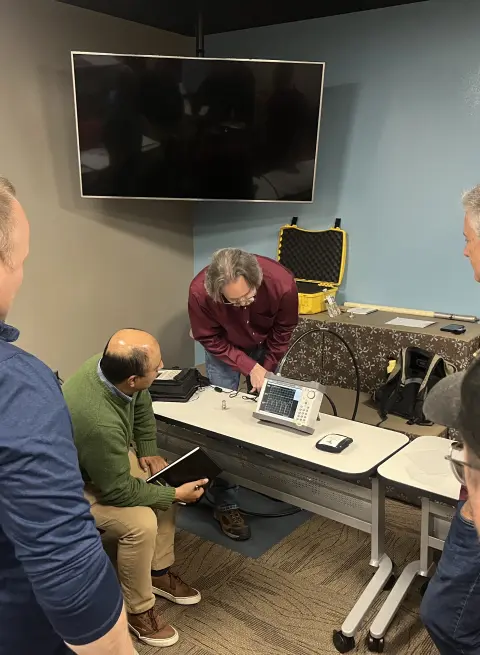Cost: $1,699, or NO COST for those eligible via IMAP or TechCred funding.
Module 1: Your Future with 5G covers why we need 5G, the current limitations of 4G technology, and how 5G is being created.
You’ll learn about user applications, new kinds of businesses that have been created, and review current use cases. This knowledge will prepare you for the influx of new jobs being created by this new technology.
Module 2: Spectrum Fundamentals explains how frequency bands and spectrum are at the center of the mobile broadband ecosystem.
“Spectrum Scarcity” is a known issue that is often misunderstood. This module will provide an overview of key aspects of spectrum bands, auctions and allocation, coverage vs capacity, propagation, and future-readiness. Distinct types of spectrum bands (low-band, mid-band, and mmWave) and recent spectrum auctions (CBRS, C-band, mmWave for 5G) are summarized.
This module will also help you understand how the selection of frequency bands affects the design of multiband cell sites (Macro and Indoors). Other topics include overview of unlicensed bands for Wi-Fi and future bands for 6G.
Module 3: 5G Ecosystem Overview was designed to provide an overview of 5G technology, what to expect, and the impact on businesses and consumers. It also explains how the 5G rollout will be instrumental across industries—from retail, healthcare, entertainment, automotive, and manufacturing to tech and real estate. Examples include connected cars and autonomous driving; smart cities with connected planning, transportation, and infrastructure; connected healthcare; the industrial “Internet of Things”; and smart factories.
To reap the benefits of 5G when it is deployed, it is important to understand how to plan for this new wave of automation. You will also: learn about common myths; review current data analytics; and about how today’s technology will achieve performance improvements.
Module 4: Cell Site Design and Planning bridges the fundamentals of macro tower and Radio Frequency (RF) designing concepts. This module will show you the journey of macro cell site evolution.
You will learn how to read engineering data sheets and follow RF Plumbing Diagrams: review hardware components found at a typical macro tower and study their functionality. You also will learn how to read an engineering datasheet for various hardware and how they are connected by analyzing the RF Plumbing diagrams.
Co-siting techniques will be explained through multiple examples and theories associated with Diplexers,Tower Mounted Amplifiers, and Antenna Tilting mechanism. In addition, this module explains the role of Remote Radio Head (RRH) and how the top of the cell tower is evolving to accommodate new advancements in technology.

